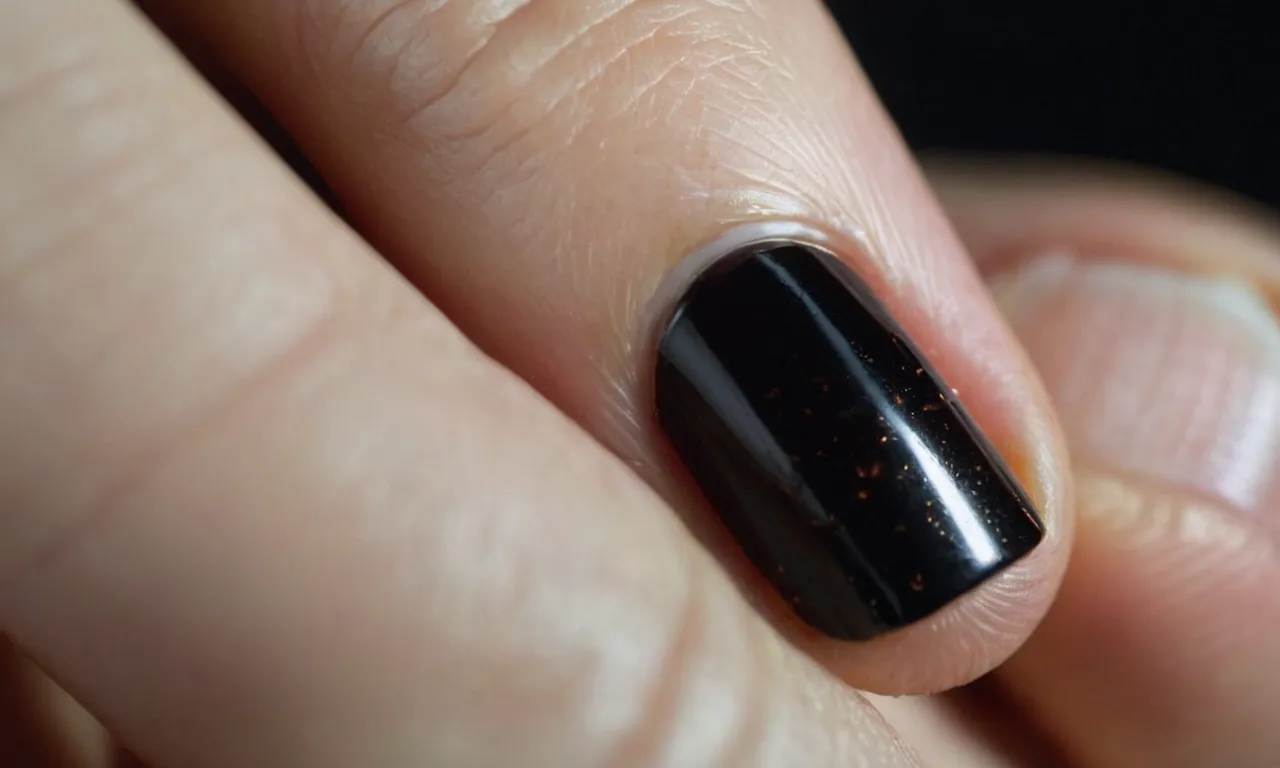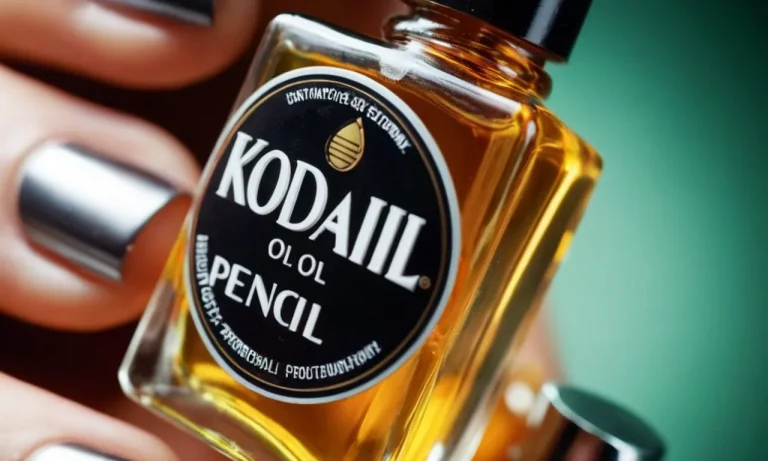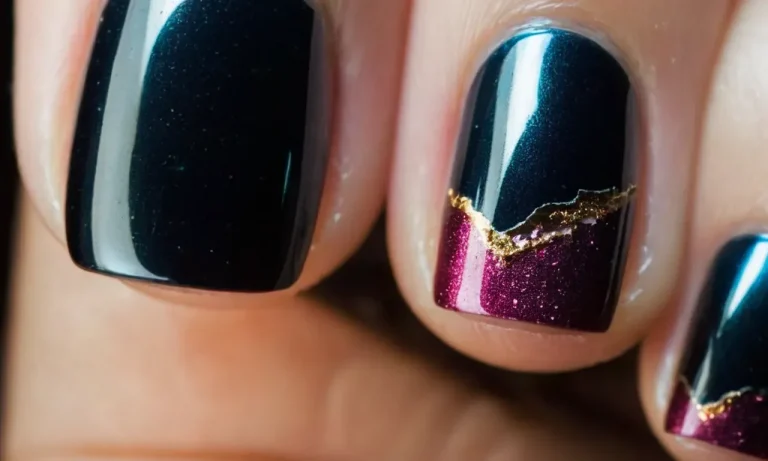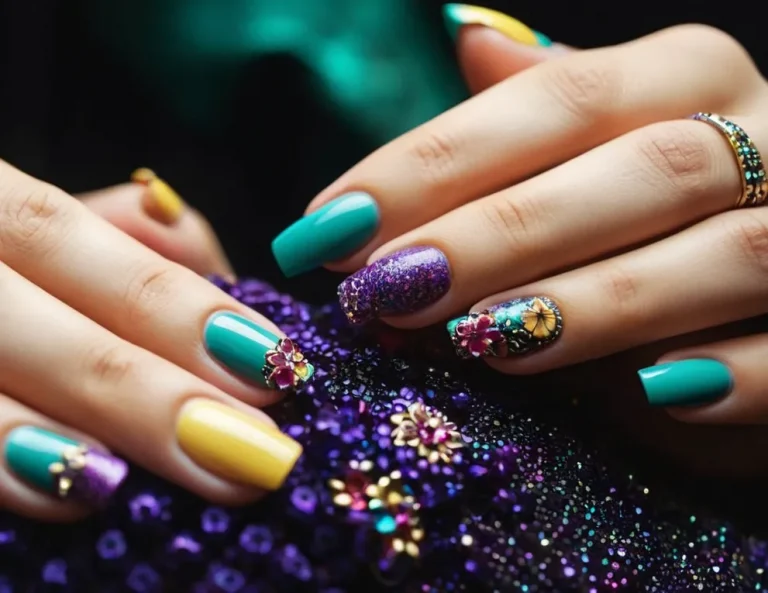What To Do When You Drop Something On Your Toe And The Nail Turns Black
Have you ever dropped something heavy on your toe and noticed the nail quickly turning black afterward? This painful experience can be alarming, but there are ways to care for the injury properly so your toenail can heal.
If you’re short on time, here’s a quick answer to your question: The blackness under the nail is likely dried blood caused by trauma from the impact. Keep the nail clean and protected as it grows out. See a doctor if there are signs of infection like pus, swelling, or increased pain.
In this comprehensive guide, we’ll discuss what causes a black toenail after an injury, when to seek medical treatment, and how to care for the nail at home as it heals. We’ll also provide tips to prevent future toenail trauma.
What Causes a Black Toenail After an Injury?
Bleeding Under the Nail (Subungual Hematoma)
When you drop something on your toe, it can cause trauma and damage to the nail bed underneath the nail. This leads to bleeding and bruising under the nail, known as a subungual hematoma. As blood pools under the nail, it can appear black or purple in color and even lift the nail up off the nail bed if it is a large hematoma.
According to the American Academy of Family Physicians (AAFP), subungual hematomas are one of the most common toenail injuries. They often occur from sudden trauma like dropping something on your toe or stubbing your toe forcefully.
The blood has nowhere to go and gets trapped under the hard nail plate, causing both pain and the unsightly nail discoloration.
Bruised Nail Bed
In addition to bleeding under the nail, you can also bruise the soft tissue of your nail bed when you drop something on your toe. Just like a bruise anywhere else on your body, this causes leakage of blood out of small capillaries and into the surrounding tissue.
A bruised nail bed may appear blue, black, or purple under the nail. It usually resolves as the bruised area heals. However, sometimes the discoloration remains until the damaged part of the nail completely grows out, which can take several months according to dermatologists at the American Academy of Dermatology (AAD).
Damaged Nail Matrix
The nail matrix refers to the area under your cuticle where your fingernails and toenails start to grow. This area contains nerves and small blood vessels that supply nutrients to the nails so they can regenerate and grow properly.
Blunt force trauma from dropping something on your toe can damage the nail matrix, disrupting nail growth. This can cause long-lasting or permanent nail deformities or discoloration, depending on the severity of the initial injury according to the Mayo Clinic News Network.
Keep an eye on any black discoloration or nail deformity after trauma. Consult your doctor promptly if the condition worsens or fails to improve within a few weeks. This may indicate a more serious injury that requires further treatment to prevent permanent damage.
When to See a Doctor for a Black Toenail
Signs of Infection
If your black toenail begins showing signs of a nail bed infection, it’s important to see your doctor. Some key signs to watch out for include:
- Pus draining from around the nail
- A foul smell coming from the nail
- Redness, swelling, and warmth around the toe and nail
- Fever or chills
As the CDC notes, these could signal a bacterial or fungal nail infection, which requires medical treatment with oral or topical medications to clear it up.
Persistent Pain
A black toenail is often accompanied by significant pain initially after the injury occurs. However, if throbbing pain in the toe persists for more than a few days or seems to be getting worse, check in with your doctor.
While a little discomfort is normal, worsening pain may indicate an infection or other complications. Your doctor can evaluate if additional treatment is needed to promote healing.
Inability to Wear Shoes
Along with pain at the site of the injury, you may find it impossible to wear closed-toe shoes if swelling and tenderness make any contact with the nail too uncomfortable. This can impact your ability to walk and go about normal activities.
Seeing your doctor for numbness medication, padding, toe splints, or other solutions can help ease your pain so you can start wearing shoes again, according to the American Academy of Family Physicians.
Toenail Detached from Nail Bed
In some cases, trauma may cause the toenail to partially or fully detach from the nail bed. This removes the nail’s blood supply and prevents it from growing back properly.
If the nail is still hanging on by a thread, it’s best to seek medical care. The doctor can remove the nail and cauterize the area to prevent infection so that a new, healthy nail can eventually regrow in its place.
Home Care for a Black Toenail
Keep the Toenail Clean
Keeping the injured toenail clean is crucial to prevent infection while it heals. Gently wash the toe with mild soap and water once a day, taking care not to further injure the nail bed. Pat dry with a clean towel. After washing, apply an antibiotic ointment like Bacitracin and cover with a bandage.
Trim Carefully
As the bruised part of the nail grows out, you can trim the dead nail bit by bit. Use sterile nail clippers and trim little by little to avoid damaging the tender new nail growing underneath. Disinfect the clippers with isopropyl alcohol before each use.
Go slowly and stop if you feel any pain or discomfort.
Apply Antibiotic Ointment
Applying antibiotic cream can prevent infection as the nail grows out. Bacitracin, Neosporin, or an antiseptic first aid ointment can be gently rubbed onto the nail 1-2 times per day after cleaning. These ointments contain active ingredients to combat bacteria and fungi.
Cover with a Bandage
Covering the injured toenail with a bandage or adhesive bandage will keep bacteria out and let the nail grow safely underneath. Change the bandage daily when you clean the area. Choose breathable bandages like gel bandages that allow air flow and absorption.
Keeping it covered prevents additional trauma.
Wear Roomier Shoes
While the nail heals, wearing open-toed shoes or sandals can prevent pressure on the tender nail bed. If you must wear closed-toe shoes, choose shoes a half or full size larger so the toe area is roomy. Too much pressure from shoes can lead to losing the nail entirely.
Ease pressure on the bruised nail by adding padding inside shoes as well.
Take Over-The-Counter Pain Relievers
If the injured toenail causes significant pain, over-the-counter pain medications can help alleviate discomfort as it heals. Medications like acetaminophen (Tylenol), ibuprofen (Advil), or naproxen (Aleve) reduce pain signals and swelling.
Follow dosage instructions carefully and limit usage to less than 2 weeks.
Tips to Prevent Future Toenail Injuries
Wear Properly Fitted Shoes
Wearing properly fitted shoes is crucial for preventing toenail injuries. Shoes that are too tight squeeze the toes together, increasing the risk of impacts and ingrown nails. When trying on shoes, make sure to leave about a finger width of space between the end of the shoe and the tip of your longest toe.
Also ensure the toe box is wide enough to let your toes move freely without rubbing on the sides. Well-fitted shoes can make all the difference in avoiding smashed or bruised toenails down the road.
Trim Toenails Straight Across
Keeping your toenails neatly trimmed and filed straight across can prevent painful ingrown toenails. Using sharp nail clippers or scissors, cut them so they are even with the tip of the toe. Never round off the corners, as this encourages the nail to grow into the skin.
For proper healing if you’ve had toe injuries before, it’s best to trim nails after showering when they are soft. Be extra careful trimming toenails if you have trouble seeing or reaching your feet.
Wear Protective Footwear for Active Sports
Participating in active sports like soccer, football and basketball carries a higher risk of stubbing, jamming or dropping weights on unprotected feet and toes. Protect those piggies by wearing appropriate athletic shoes with reinforced toes and padded insoles.
Cleats in sports like baseball, softball and golf can also inflict damage, so opt for footwear designed specifically for your activity. And don’t play any sports barefoot! Wearing protective gear on your feet can help avoid many common toenail mishaps.
Be Careful When Moving Heavy Objects
Dropping heavy objects like furniture or appliances on your feet can easily cause toenail trauma. Painful subungual hematomas (bruising under the nail) or even complete nail loss can occur. When moving heavy furniture or appliances, wear steel-toe boots and get assistance carrying large items.
Bend at the knees when lifting to avoid dropping things on your feet. Take things slow and steady. Trying to move bulky objects too quickly raises the risk of accidents. Be especially careful of open-toed shoes, sandals or going barefoot, which leave nails exposed.
Conclusion
A black toenail caused by trauma can be alarming but usually isn’t serious if properly cared for as the nail grows out. Keep the nail clean and protected, see a doctor if signs of infection develop, and take steps to prevent future toenail injuries.
With diligent at-home care and awareness, your toenail should return to normal in 4-6 months as the damaged part grows out. Seek prompt medical care if you have any concerns about your nail’s condition.







